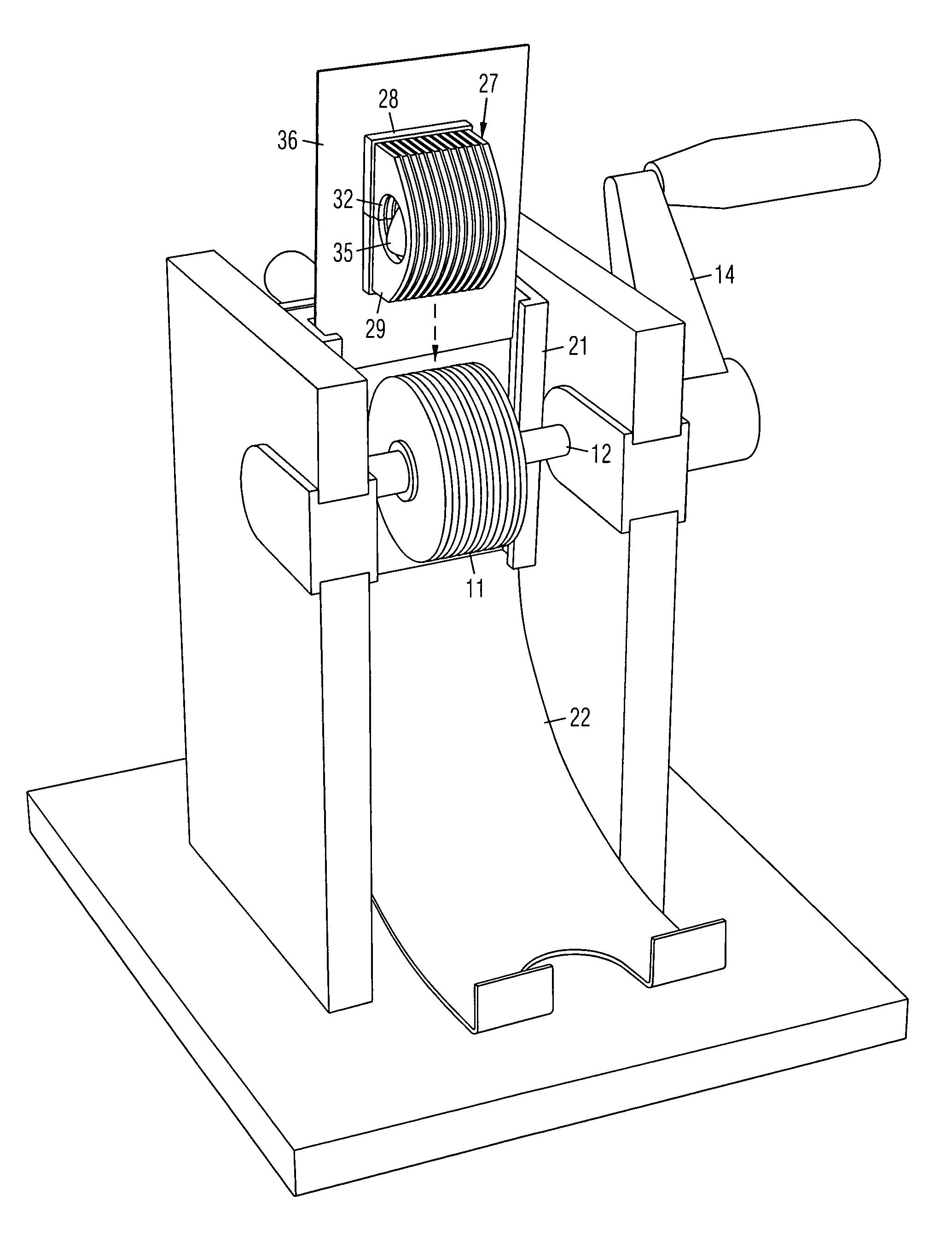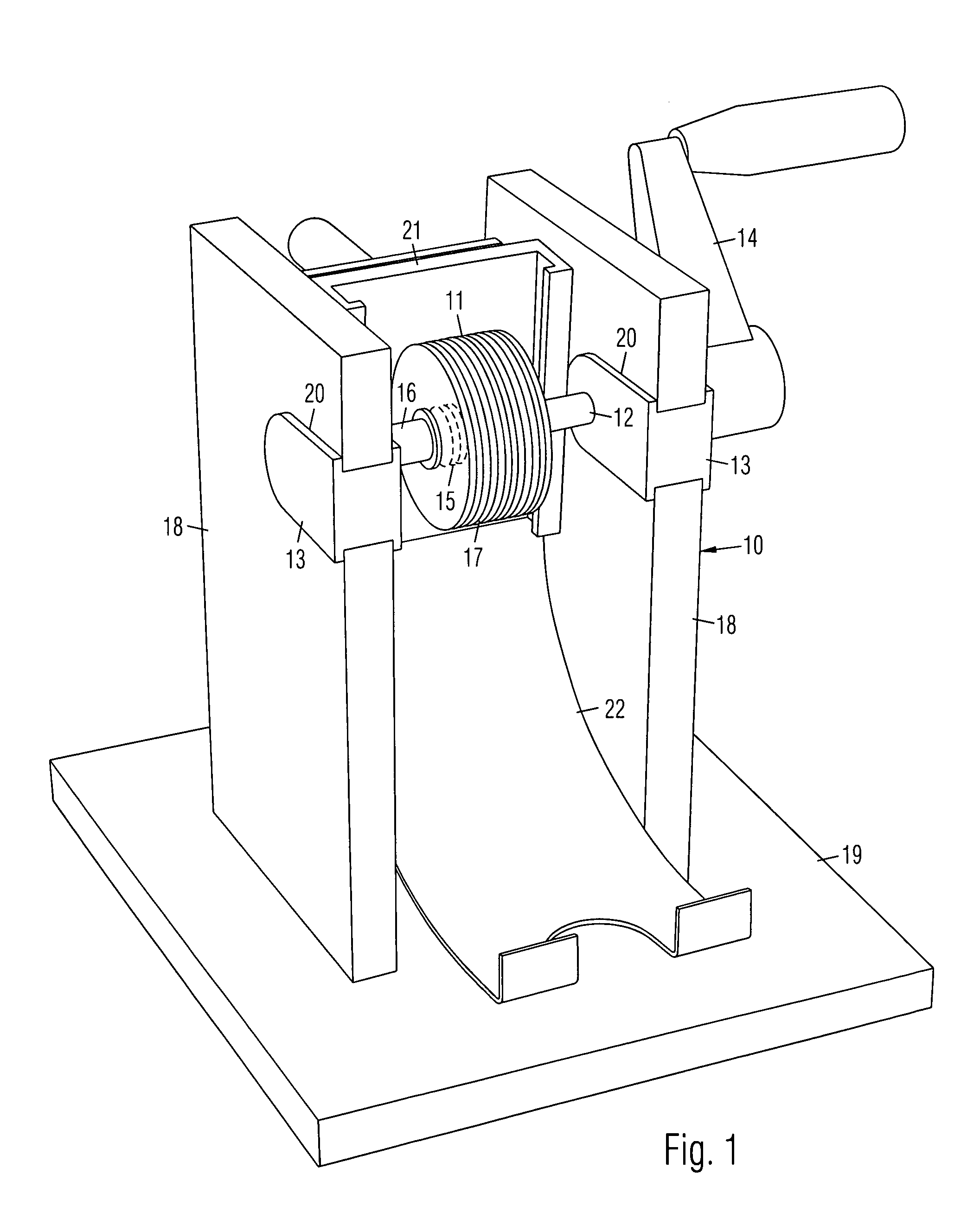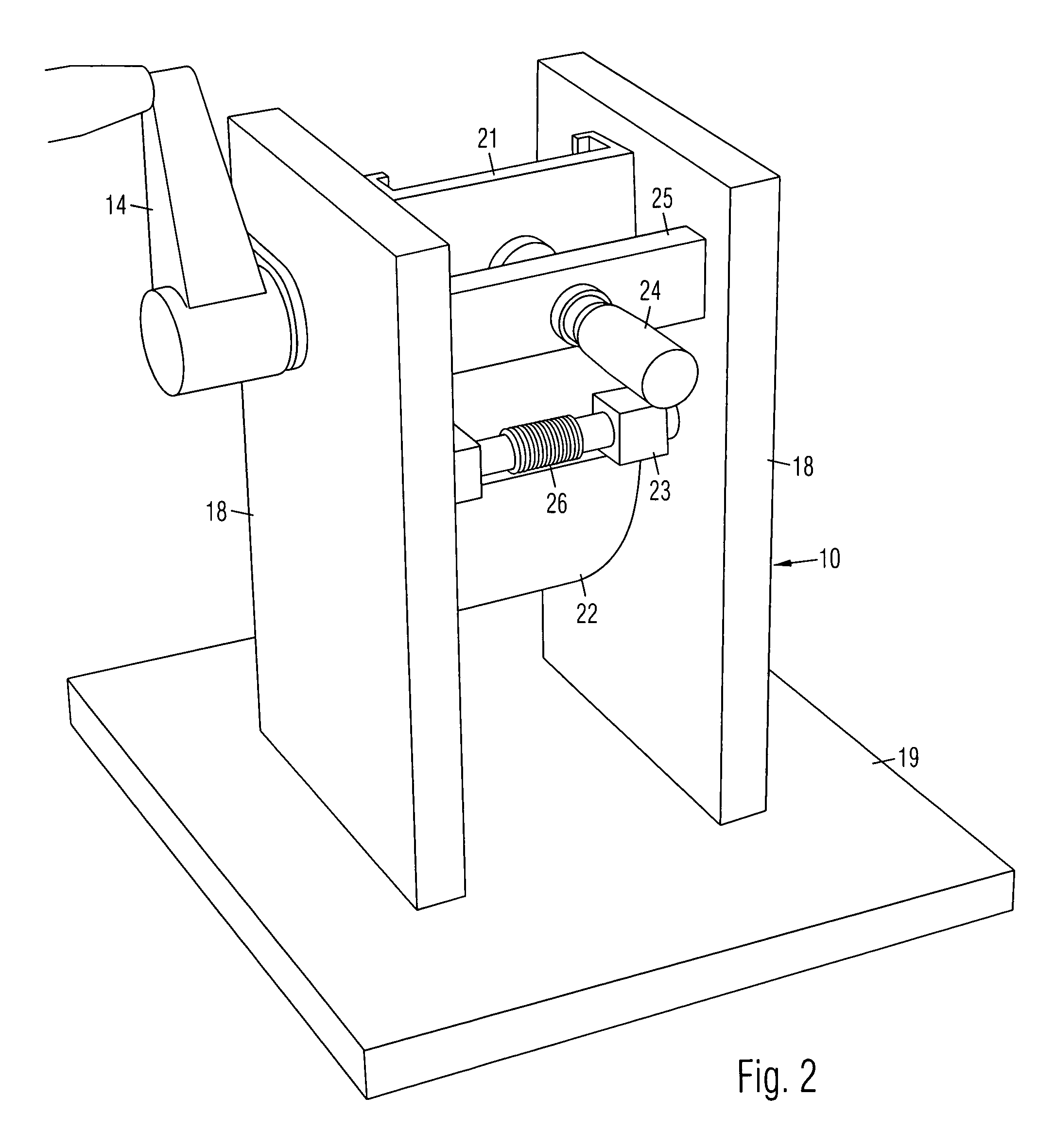Tissue slicing device
a tissue slicing and tissue technology, applied in the direction of manufacturing tools, transportation and packaging, paper/cardboard containers, etc., can solve the problems of inconvenient cutting of thin slices, inability to cut thick slices, and inconsistent pieces, and achieve the effect of ejecting the cut tissu
- Summary
- Abstract
- Description
- Claims
- Application Information
AI Technical Summary
Benefits of technology
Problems solved by technology
Method used
Image
Examples
Embodiment Construction
FIG. 1
[0018]A preferred embodiment of a tissue slicing device 10 is shown in a front perspective view in FIG. 1. It is comprised of a plurality of parallel circular blades 11 coaxially connected to a rotary shaft 12 supported on bearings 13. A hand crank 14 is attached to shaft 12 for manually turning blades 11, although a motor (not shown) may be attached instead. Blades 11 are axially separated from each other by respective spacers 15 and secured on shaft 12 by a fastener 16. The width of gaps 17 between blades 11 are adjustable by removing fastener 16, removing blades 11 and spacers 15 from shaft 12, and reassembling blades 11 on shaft 12 with spacers of a different thickness.
[0019]Shaft 12 is positioned between a pair of supporting walls 18 attached on a base 19. Bearings 13 are detachably received in bearing slots 20 in respective walls 18. A shield (not shown) may be provided between walls for covering blade. A guide member 21 is positioned behind blades 11. An output tray 22 ...
PUM
| Property | Measurement | Unit |
|---|---|---|
| Distance | aaaaa | aaaaa |
Abstract
Description
Claims
Application Information
 Login to View More
Login to View More - R&D
- Intellectual Property
- Life Sciences
- Materials
- Tech Scout
- Unparalleled Data Quality
- Higher Quality Content
- 60% Fewer Hallucinations
Browse by: Latest US Patents, China's latest patents, Technical Efficacy Thesaurus, Application Domain, Technology Topic, Popular Technical Reports.
© 2025 PatSnap. All rights reserved.Legal|Privacy policy|Modern Slavery Act Transparency Statement|Sitemap|About US| Contact US: help@patsnap.com



